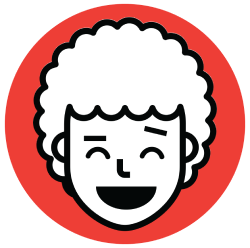As October unfolds, we’d like to call your attention to a very special day in Mathnasium history: on October 1, 2002, Peter Markovitz, Larry Martinek, and David Ullendorff opened the first Mathnasium Learning Centre in the Westwood area of Los Angeles, Calif. With Larry as Centre Director and four Instructors on staff, Mathnasium of Westwood was to grow into the perfect testing ground and launching pad for the Mathnasium Method and the Mathnasium franchise overall. Number Sense Blog sat down with Larry for an insightful conversation on Mathnasium, his personal journey, and his life’s work.
NSB: How are you feeling?
LM: Really great! When Westwood first opened, I don’t think I really knew where Mathnasium would be in 13 years. And here we are with 600+ centres in North America. We’re growing at an incredible rate, and it’s just stunning to see where we are today.
NSB: At the time of Westwood’s opening, how long had you been working on what is today the Mathnasium Method?
LM: Roughly 28 years. I started teaching math in 1974, and by the end of my first semester, I started creating my own material—so many of my students were behind, none of the textbooks made sense to them. I started cranking out worksheets for these kids myself on one of those old mimeograph machines.
NSB: Who came up with the name “Mathnasium”?
LM: Peter did. The idea was simply to combine the words “math” and “gymnasium.” Interestingly, when you consider the roots of the word “Mathnasium,” the name holds such great significance, especially considering what we do. The “nas” in “Mathnasium” shares a root with “renaissance,” which implies birth or re-birth. As for the “ium,” words that end in “um” and “ium” carry a notion of “a place of” (think “aquarium” and “museum”). “Math” denotes “knowledge”—a “polymath” is a person who has knowledge in many subjects, while an “opsimath” refers to someone who acquired knowledge late in life. So when you look at the etymology of “Mathnasium” from this standpoint, it means “the birthplace of knowledge.” It really all came together.
NSB: As we all know, the Mathnasium Method is the result of many years of collaboration between you and your late son, Nic. Can you talk more about that creative process?
LM: In our household, we always found ways to be dealing with education, learning, and expanding horizons. It was how we lived. Nic and I talked about math all the time. It was all very organic and unscheduled. Our house was a 24-hour creativity factory.
Peter once told me, “You have the humility to have learned from a child.” That’s a very powerful statement and the best compliment I’ve ever received. Most people see children as these empty vessels into which you pour knowledge. From other teaching experiences—even before Nic was around—I knew that that was a false statement. I started observing Nic when he was about two or three years old. He had a peg board, and he’d put colored pegs down: one green, two red, four orange... Now, it’s not uncommon for kids that age to go red-green-red-green, but he showed a growing pattern—a progression. That was my first clue that an analytical mind was brewing in the head of my two-year-old kid. When he was four years old, we’d talk about fractions—and it just made perfect sense to him. At that point, he started volunteering all the stuff he was thinking on his own. When he was seven, he said, “Dad, if the world was the size of a basketball, our house would be the size of a flea’s flea!” He demonstrated a remarkable sense of proportion and scale. I know he definitely didn’t learn that stuff at school, and he didn’t learn it from me!
When Nic was about 10 or 11 years old, we spent a lot of time on the road taking trips to Northern California. We worked through what would eventually become curriculum content on the backs of placemats in restaurants along the way, when our ideas were flowing.
NSB: How has Mathnasium taken your professional life to new heights?
LM: When we first started, I was very well known throughout West Los Angeles as a math expert. The stage I’m on now is much bigger. I’ve had the opportunity to present at Mensa. One of the people in that audience was a Mathnasium franchisee who later told me that people were really impressed with my presentation. Additionally, there are several videos on YouTube that present me as a math expert. At the Leadercast conference back in May, speaker Andy Stanley mentioned me in his speech about leadership. And that’s all in addition to having created a curriculum that’s currently used in over 600 Mathnasium centres. The fact that I’ve achieved professional recognition in front of a much larger audience—that’s the highlight of my life right there. It’s very gratifying.
NSB: Final thoughts?
LM: In 2011, Mathnasium HQ moved from a 3,500 sq. ft. office to one that was about 10,000 sq. ft. Within 10 months of moving, we had to knock down a wall to expand into another office. Milestones like this reflect and support the amazing growth we’ve seen throughout our franchise system. In retrospect, the growth we’ve undergone at certain junctures has just been remarkable to me. It’s also gratifying, quite frankly, to have created something that creates jobs. From HQ staff to staff in our learning centres, look at how many people are employed because of Mathnasium’s existence!
Ultimately, creativity is what my life’s work is all about. The math is the math. There’s always going to be a structure to it. But the great thing is, you can always add to the body of knowledge and come up with a new take on how numbers really work. In that vein, the contribution Nic made to Mathnasium and math education was his ability to think about math in a creative and civilized manner. He had such a thorough understanding of his thought processes. Through Mathnasium, Nic showed the world that math is not just a matter of rote processes. The things that go under the banner of “rote processes” can be taught in a much better way, and the idea of “teaching kids math in a way that makes sense” all flows from Nic, because he had this innate sense of how math worked and how it should be approached.
Math and math education continue to evolve. In my lifetime, a completely different way to approach calculus was developed by someone at the University of Jerusalem. Regular calculus is called analysis; what this guy did was develop non-standard analysis. Most of the math we do is hundreds of thousands of years old, and here’s someone who took what he knew and expanded it in fascinating ways. In a lot of ways it’s so exciting to see new stuff appearing—either a fresh take on something that exists or in a couple of cases, just coming up with things that no one’s ever thought about before. It’s just invigorating for me. Many speak of the idea of being “lifelong learners,” and in my case, that’s not hyperbole.

 877-601-6284
877-601-6284 877-601-6284
877-601-6284















